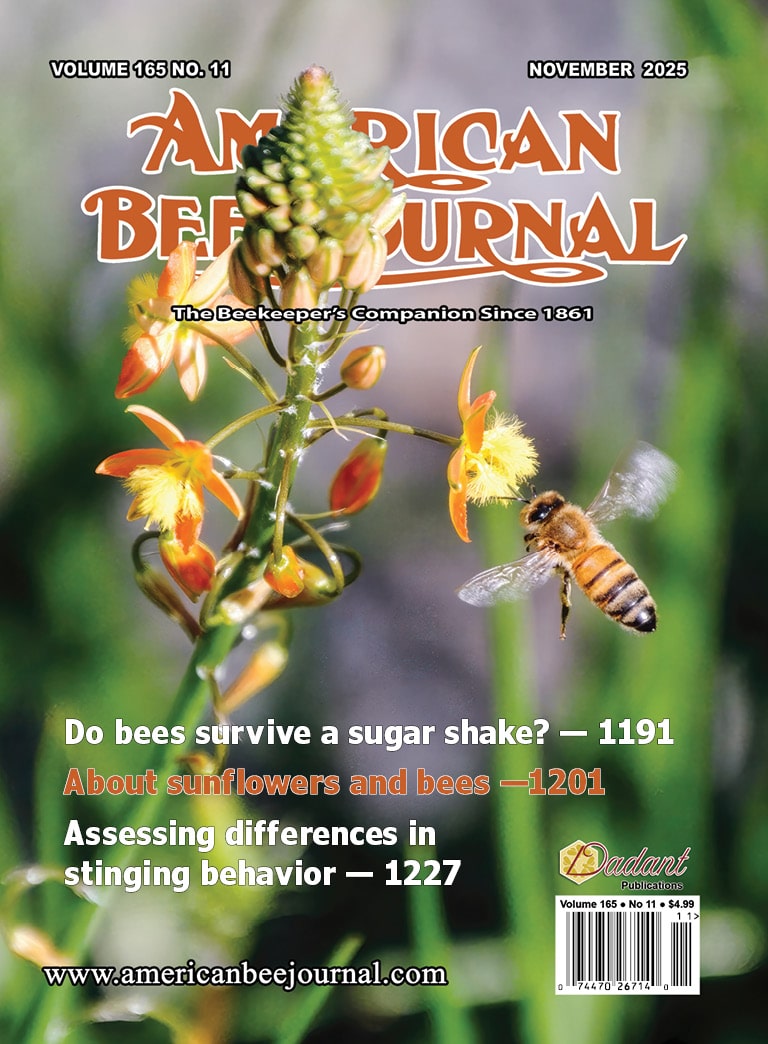As a follow-up to my last article, I will continue to discuss the major stressors of honey bee colonies. I covered the main biotic stressors (pest, pathogen, predator, parasite) of honey bee colonies in my July article. Now, I will discuss the other major stressors of honey bee colonies: managed-related stressors, nutrition, queen-related stressors, and weather-related stressors.
Many of the stressors that I discuss herein are more significant stressors than some of the biotic ones I discussed in my July column. In fact, one or two of these stressors are among the main problems that beekeepers have to address throughout their beekeeping careers.
My strategy for discussing these stressors will closely mimic the one I used when discussing biotic stressors in my previous article. [The remainder of the introductory text that follows is from my July article with minor modifications as needed. Ellis 2016] For each stressor, I will briefly discuss its role in colony health and mortality. I also note the overall potential threat it poses to colonies (low, moderate, significant). It is important to realize that I ranked the stressors in Table 1 simply based on my views of how they impact colonies. In general, any stressor can have low, moderate, or significant impact on affected colonies and the level of the severity of the impact can vary widely by time of year or location. Consequently, my ranking of each stressor is only for reference purposes and not intended to be a static designation.
Low threat – The stressor can kill bees or colonies, but usually does not. Thus, the beekeeper must be aware of its potential to cause harm and remedy the situation if necessary. Usually, stressors that are present as low threats do not need to be addressed with regularity, though the beekeeper needs to be aware of the threat it poses and be able to address it should the need arise. Stressors in this category usually only affect a small number of colonies in an apiary. In severe circumstances, low threat stressors can manifest as moderate threats and, correspondingly, would need to be addressed.
Moderate threat – Stressors that present as moderate threats often are common (i.e. in/affect a high percentage of colonies) and can cause significant damage if not addressed appropriately. Often, moderate threat stressors can be managed with regular effort. Moderate threat stressors can escalate into serious threats in some areas and in certain circumstances. Consequently, beekeepers must monitor for and actively manage moderate threat stressors to limit their overall impact on colonies.
Significant threat – Significant threats are those threats that usually are widespread and typically kill colonies if the threat is not managed actively. In fact, these stressors must receive the full attention of beekeepers who may or may not have a viable list of management-related mitigation options available for the stressors. This list includes a couple of stressors that are believed to harm colonies significantly, even if the level of threat they pose is not known with certainty.
Management-related stressors
Management-related stressors are those that manifest based on how beekeepers manipulate their colonies through the normal processes associated with keeping honey bees. One could argue that bee colonies in their natural state are less stressed than managed colonies, but I am not convinced that this is the truth. That said, there is no doubt that management adds certain levels of stress into the colony’s life. Thus, it behooves beekeepers to be aware of and use best management practices to ensure that what they are doing poses as little threat as possible to the health and fecundity of the hive.
1) Apiary site selection: Inappropriate siting of apiaries (Figure 1) can be a detriment to colony health and prolificacy. Thus, I consider it a moderate threat to…


